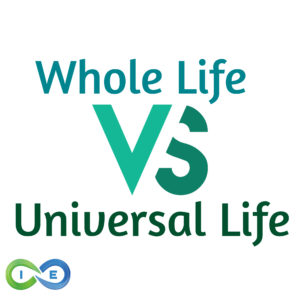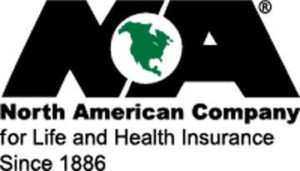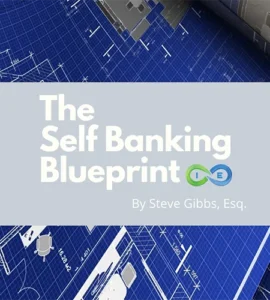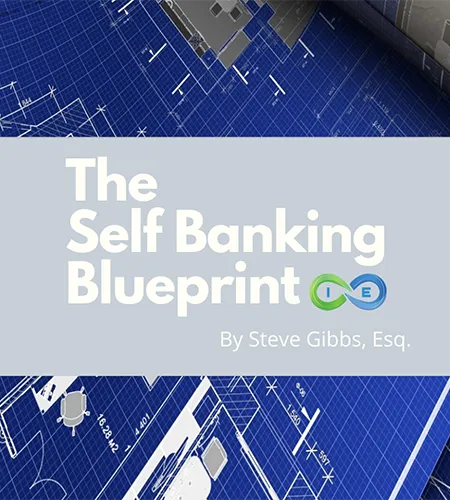Co-Written By: Jason Herring, Pro Client Guide
14 years Life Insurance & Estate Planning expertise | Series 6, 63, 65 Licensed | Prudential Pinnacle Award Winner 2014-2015
Most people sitting on $100K+ in old life insurance or annuity policies don’t realize they could be missing out on tax-free upgrades that could transform their financial future.
🎯 TL;DR – Quick Answer
A 1035 exchange lets you swap old life insurance or annuity contracts for better ones without paying taxes on gains. Best choice for policyholders with significant cash value seeking improved returns, lower fees, or better features. We only recommend when the numbers clearly work in your favor.
🔍 Key Facts at a Glance
- What it is: IRS-approved tax-free exchange of insurance contracts (Section 1035)
- Market reality: 18% of permanent life insurance policyholders executed exchanges in the past decade
- Growth: Activity increased 23% between 2022-2024
- Average transfer: $92,700 in early 2025 (up from $78,500 in 2023)
- Processing time: Down from 45 days to 21-30 days due to digital improvements
Table of Contents
What Is a 1035 Exchange?
A 1035 exchange allows you to transfer cash value from one insurance or annuity contract to another without triggering immediate taxes, even if your original policy has significant gains. Named after Section 1035 of the Internal Revenue Code, this provision recognizes that your fundamental investment position remains the same—you’re simply upgrading your financial vehicle.
Why 1035 Exchanges Matter More Than Ever
With interest rates at their highest levels in over 15 years and innovative insurance products combining life insurance with long-term care benefits, the opportunity to upgrade old, underperforming policies has never been more compelling.
According to the latest LIMRA research, the surge in 1035 exchange activity is driven by three key factors:
- Rising interest rates offering better returns on newer policies
- Product innovations combining life insurance with long-term care benefits
- Digital transformation reducing exchange processing time from 45 to 21 days
Real Estate Analogy: Understanding the Parallel
Think of it like upgrading your financial vehicle while keeping all the tax benefits intact. Just as the IRS allows real estate investors to use 1031 exchanges to transfer equity from one property to another “like-kind” asset, the 1035 exchange allows policy owners to transfer cash value between insurance policies without tax penalties.
Real estate often requires a fairly steep down payment and is costly in the early years of ownership but can deliver big returns in the long run. It offers income tax-advantaged cash flow, numerous tax advantages, builds equity that can serve as collateral for loans, and ultimately builds wealth.
You can seamlessly substitute “permanent life insurance” for “real estate” in all of the above respects. Whole life and universal life insurance embody many of these same characteristics.
When a 1035 Exchange Makes Sense
Best choice for business owners, retirees, and policyholders seeking tax-efficient upgrades when specific conditions align. We believe in honest recommendations—we’ll only advise a 1035 exchange when the numbers clearly work in your favor.
✅ Ideal Candidates Typically Have:
- Permanent life insurance policies with significant cash value
- Policies that are at least 10-15 years old
- Carriers with declining financial strength ratings
- Changed financial goals or circumstances
- Policies with underperforming interest rates or high fees
- Estate or business planning needs that have evolved
The Numbers Game: When It Actually Makes Sense
A 1035 exchange should be a data-driven decision, not an emotional one. Consider these scenarios where exchanges typically provide clear benefits:
Scenario 1: Interest Rate Arbitrage
With today’s higher interest rate environment, many old annuities purchased during the low-rate era (2010-2020) are significantly underperforming. For example:
- Old annuity (2015): 2.5% guaranteed rate
- New MYGA (2025): 5.5% guaranteed rate
- Result: On a $200,000 contract, that’s an additional $6,000 annually in guaranteed growth
Scenario 2: Product Innovation Benefits
Modern hybrid policies offer features that didn’t exist when older policies were purchased:
- Long-term care benefits integrated into life insurance
- Chronic illness riders providing living benefits
- Enhanced income riders with guaranteed withdrawal rates up to 6.5%
Scenario 3: Cost Efficiency Improvements
Many newer policies have lower internal costs and fees compared to older contracts, meaning more of your money goes toward cash value accumulation rather than insurance company expenses.
Types of 1035 Exchanges
Section 1035 of the U.S. Internal Revenue Code allows specific types of tax-free exchanges. Understanding what’s allowed—and what’s not—is crucial for successful implementation.
Permitted 1035 Exchanges
Life Insurance Options
Life insurance policies can be exchanged for:
- Other life insurance policies
- Endowment contracts
- Annuity contracts
- Qualified long-term care insurance contracts
Annuity Options
Annuity contracts can be exchanged for:
- Other annuity contracts
- Qualified long-term care insurance contracts
- Note: You CANNOT exchange an annuity for a life insurance policy
Endowment Options
Endowment contracts can be exchanged for:
- Other endowment contracts
- Annuity contracts
- Qualified long-term care insurance contracts
Popular Exchange Strategies
Life Insurance to Annuity (Retirement Planning)
Best choice for retirees who no longer need substantial death benefits but want guaranteed income. This classic exchange allows you to convert death benefit protection into retirement income without tax consequences. Learn more about life insurance 1035 exchanges.
Old Annuity to New Annuity (Rate Improvement)
With annuity sales reaching record $432.4 billion in 2024, many carriers are offering competitive rates. Exchanging an old, low-rate annuity for a modern high-yield option can significantly boost retirement income. Explore annuity 1035 exchange strategies.
Life Insurance to Hybrid Policy (Modern Protection)
Exchange traditional life insurance for policies that combine death benefits with long-term care coverage, addressing today’s retirement realities where healthcare costs are a primary concern.
Real-World Case Studies: When 1035 Exchanges Transform Financial Outcomes
📊 Case Study Success Metrics
Our clients typically see these improvements with strategic 1035 exchanges:
- 20-40% better policy terms and features
- Significant annual premium reductions (often 15-25%)
- Enhanced guaranteed interest rates (2-3% improvements common)
- Added benefits like long-term care coverage worth hundreds of thousands
Case Study 1: The Anderson Family Business Transformation
Robert Anderson, a 62-year-old manufacturing business owner, demonstrates how a strategic 1035 exchange can align insurance with evolving business needs while delivering quantifiable benefits.
The Challenge
Robert’s business had grown to $4.2 million in value, but he was carrying an outdated universal life policy from 2001 with significant problems:
- $780,000 in accumulated cash value
- Modest guaranteed interest rate of only 2.5%
- Annual premiums increased from $24,000 to $32,000
- Carrier’s financial rating declined from A+ to B+
- Coverage insufficient for current business valuation
- Outstanding policy loan of $120,000 accruing interest at 5.5%
The Strategic Solution
Working with his insurance advisor, Robert implemented a comprehensive three-phase approach:
- Assessment Phase (January-February 2024)
- Comprehensive review of existing policy performance
- Analysis of tax basis ($650,000 in total premiums paid)
- Updated business valuation for appropriate coverage levels
- Strategic Planning (March 2024)
- Developed loan repayment strategy using business cash reserves
- Selected new carrier based on financial stability and product features
- Chose hybrid policy with integrated long-term care benefits
- Execution (April-May 2024)
- Repaid the $120,000 policy loan
- Completed 1035 exchange paperwork
- Transferred $660,000 in cash value to new policy
- Increased death benefit to $3.8 million
The Quantifiable Results
Robert’s 1035 exchange delivered impressive, measurable benefits:
- Tax savings: $92,400 by avoiding capital gains on $130,000 growth over basis
- Annual premium reduction: 22% (from $32,000 to $25,000)
- Improved guaranteed interest rate: From 2.5% to 3.75%
- Added long-term care protection: $500,000 in benefits
- Better business alignment: Coverage now matches succession plan needs
- Annual interest savings: $6,600 by eliminating loan interest expense
Timeline: The entire implementation took 110 days from initial consultation to policy issuance—nearly twice as fast as similar exchanges would have taken just a few years ago.
Case Study 2: The Cash Value Optimization Strategy
This case study, based on a recent client consultation, demonstrates how 1035 exchanges can transform death benefit-focused policies into cash value powerhouses.
The Situation
A 48-year-old male with preferred non-tobacco health came to us with a 20-year-old whole life policy that was misaligned with his current goals:
- Original policy: Over $3 million death benefit
- Annual premium: $25,000
- Cash value accumulated: $260,000 over 20 years
- Problem: Policy optimized for death benefit, not cash value growth
The Strategic Transformation
Using the 1035 exchange, we moved the client from a death benefit-focused strategy to a cash value optimization approach:
- Transferred: $260,000 cash value to new indexed universal life policy
- Reduced death benefit: From $3+ million to $1.2 million
- Maintained premium: $25,000 annually for 10 years
- Policy type: Indexed universal life with 10% current cap rate
- Projection basis: 6% average annual return
The Projected Outcomes
📈 Powerful Results Based on 6% Average Returns:
- Total cost basis: $510,000 (10 years of $25,000 premiums + $260,000 transfer)
- Retirement income at age 65: $88,257 annually for 20 years
- Total tax-free retirement income: $1.7 million over 20 years
- Residual death benefit at age 85: $136,000 for family
- Return on investment: Over 3:1 ratio of income to premiums paid
Key Insight: By reducing the death benefit from over $3 million to $1.2 million, we dramatically lowered the internal insurance costs, allowing much more efficient cash value accumulation for tax-free retirement income.
Case Study 3: The Annuity Rate Arbitrage Opportunity
With interest rates at multi-decade highs, many annuity holders are sitting on significant upgrade opportunities.
The Scenario
A 60-year-old female with a fixed annuity purchased in 2018 during the low-rate environment:
- Original annuity: $300,000 premium, 2.8% guaranteed rate
- Current value: $350,000 after 7 years of growth
- Market opportunity: New MYGAs offering 5.5% guaranteed rates
The Exchange Opportunity
Using a 1035 exchange to move to a new Multi-Year Guaranteed Annuity:
- Transfer amount: $350,000 (no taxes on $50,000 gain)
- New guaranteed rate: 5.5% for 5 years
- Annual improvement: $9,450 additional guaranteed growth per year
- 5-year benefit: Nearly $50,000 in additional guaranteed accumulation
The 1035 Exchange Process: Step-by-Step Implementation
Best choice for seamless policy transitions when you follow the proper procedures. Here’s exactly how to execute a successful 1035 exchange:
Phase 1: Evaluation and Planning (30-45 days)
Step 1: Current Policy Analysis
- Order in-force illustrations from existing carrier
- Calculate current cash surrender value
- Determine cost basis (total premiums paid minus withdrawals)
- Identify any outstanding policy loans
- Review current carrier’s financial strength rating
Step 2: Market Research and Comparison
- Compare current guaranteed rates with market-leading options
- Evaluate new product features and benefits
- Assess financial strength of potential new carriers
- Calculate projected improvement in performance
Step 3: Health and Insurability Assessment
- Determine if new underwriting is required
- Consider health changes since original policy issuance
- Explore guaranteed issue options if available
- Evaluate partial exchange strategies if health is a concern
Phase 2: Application and Underwriting (21-60 days)
Step 4: New Policy Application
- Complete application with new insurance company
- Undergo medical underwriting if required
- Ensure 1035 exchange is clearly indicated on application
- Maintain existing policy during underwriting process
Step 5: Policy Loan Resolution (if applicable)
Outstanding policy loans must be addressed before the exchange:
- Option 1: Pay back the loan using available funds
- Option 2: “Reduce” the policy prior to the exchange
- Option 3: Transfer the loan to the new policy (if permitted)
Phase 3: Execution and Transfer (7-21 days)
Step 6: Exchange Documentation
- Complete 1035 exchange forms from both companies
- Irrevocably assign existing policy to new insurer
- Ensure funds transfer directly between companies
- Verify no checks are issued to policyholder
Step 7: Fund Transfer and Policy Issuance
- New insurer surrenders old policy on your behalf
- Cash value transfers directly between companies
- New policy is issued and delivered
- Original policy is officially terminated
🕐 Timeline Expectations (2025 Standards)
- Simple exchanges: 21-30 days total
- Complex cases with underwriting: 45-90 days
- Large policy values or multiple policies: 60-120 days
- Industry improvement: 50% faster than 5 years ago due to digital processing
Critical Requirements for Tax-Free Status
To maintain the tax advantages of a 1035 exchange, these requirements must be met:
Like-Kind Exchange Requirements
- Same insured/annuitant: Must be the same person on both contracts
- Same owner: Contract ownership must remain unchanged
- Direct transfer: Funds must go directly between insurance companies
- No cash receipt: Policyholder cannot receive any money during the exchange
Consolidation Rules
- Multiple to one: You can exchange multiple policies for a single new contract
- Cannot split: One contract cannot be divided into multiple new contracts
- Combined basis: Cost basis of multiple contracts combines in the new policy
Advanced 1035 Exchange Strategies
Partial 1035 Exchanges: The Diversification Strategy
Best choice for risk-conscious policyholders seeking diversification across multiple carriers. Partial exchanges have grown by 42% since 2023, with the average transfer being approximately 60% of the original policy’s cash value.
✅ Benefits of Partial Exchanges
- Diversification across multiple insurance carriers
- Access to different policy features and benefits
- Reduction of carrier-specific risk
- Creation of policies with different objectives
- Preservation of favorable provisions in older policies
Example: The Split Strategy
Consider a policyholder with a $500,000 whole life policy containing $200,000 in cash value:
- Partial exchange: $120,000 to new indexed universal life policy
- Remaining policy: Reduced paid-up whole life coverage
- Result: Two complementary policies serving different purposes
This creates:
- A dividend whole life policy providing guaranteed death benefit and steady cash value growth
- An indexed universal life policy offering potential for higher returns tied to market performance
Business Succession Planning with 1035 Exchanges
For business owners, 1035 exchanges can be powerful tools for aligning insurance coverage with evolving succession plans and changing business valuations.
Key Business Applications
- Coverage adjustments: Increase or decrease death benefits to match current business value
- Cost optimization: Reduce premiums to improve cash flow for business operations
- Benefit enhancement: Add long-term care riders for personal protection
- Tax efficiency: Optimize policy structure for estate planning purposes
Second-to-Die Policy Strategies
Many people don’t realize that a second-to-die life insurance policy converts to a single life policy for 1035 exchange purposes upon the passing of a spouse. This creates unique planning opportunities for surviving spouses.
Technology Improvements Making 1035 Exchanges Easier in 2025
The digital revolution has transformed 1035 exchanges from paperwork nightmares into streamlined processes. If you tried executing a 1035 exchange even 5 years ago, you were looking at mountains of paperwork and weeks or months of waiting. Those days are behind us.
🚀 2025 Digital Transformation Results
- Processing time reduction: From 45 days to 21-30 days average
- Paperless transactions: Electronic signatures and online applications standard
- AI verification: Automated policy detail verification reducing errors
- Real-time tracking: Digital portals showing exchange progress
The Digital Revolution
Most major carriers have finally embraced 21st-century technology, making a world of difference for consumers:
- Electronic signatures: No more printing, signing, and mailing documents
- Online applications: Complete entire process digitally
- AI verification: Automated policy detail verification reducing processing delays
- Real-time status updates: Track your exchange progress online
Real example: A recent client completed his entire exchange in just 24 days, from application to new policy issuance. That timeline would have been unheard of just a few years ago.
Advanced Comparison Tools
New comparison tools have eliminated the guesswork from 1035 exchange decisions:
- Side-by-side policy comparisons: Guaranteed rates, fees, and historical performance
- Scenario modeling: Project different outcomes based on interest rate changes
- Fee transparency: Clear disclosure of all costs and charges
- Performance projections: Realistic illustrations based on various market conditions
Blockchain and Enhanced Security
Leading carriers are experimenting with blockchain technology for policy verification, creating secure, unchangeable records of policy details that make transfers between companies faster and more secure.
When NOT to Do a 1035 Exchange: Red Flags and Cautions
Honest advice: We believe in only recommending 1035 exchanges when the numbers clearly work in your favor. Here are situations where an exchange may not be appropriate:
🚨 Red Flags – When to Avoid a 1035 Exchange
- Health has significantly declined: If your health is worse than when you got your original policy, new underwriting could result in higher premiums or declined coverage
- High surrender charges: If your current policy has substantial surrender fees that would eat into the exchange benefits
- Recent policy purchases: Policies less than 5-7 years old may not have sufficient cash value to justify exchange costs
- Minimal improvement: If the new policy offers only marginal benefits over your existing coverage
- Outstanding loans exceeding basis: Complex tax implications may arise
- Carrier pushing unnecessary exchanges: Be wary of agents recommending exchanges primarily for commission purposes
Best practice: A 1035 exchange should only proceed when projected benefits exceed costs by at least 20% over a 10-year period.
The “Step Transaction” Trap
The IRS may challenge 1035 exchanges that appear to be structured to circumvent tax rules. Common triggers include:
- Quick policy loans: Taking loans from the new policy within 6 months of the exchange
- Ownership changes: Attempting to change policy ownership during the exchange process
- Recent withdrawals: Large withdrawals from the original policy shortly before the exchange
Modified Endowment Contract (MEC) Considerations
If your current policy is a Modified Endowment Contract (MEC), the exchanged policy will maintain MEC status, which affects the tax treatment of loans and withdrawals. This is especially important for older “grandfathered” MEC policies.
Future Trends: The Evolution of 1035 Exchanges
Several trends are shaping the 1035 exchange landscape in 2025 and beyond:
Hybrid Product Innovation
The fastest-growing destination for 1035 exchanges is hybrid policies combining multiple benefits:
- Traditional life insurance protection
- Long-term care benefits
- Chronic illness riders
- Return of premium features
- Guaranteed income provisions
Integration with Comprehensive Financial Planning
Forward-thinking advisors are incorporating 1035 exchanges into holistic planning strategies considering:
- Retirement income planning
- Legacy and estate considerations
- Business succession strategies
- Tax optimization opportunities
- Long-term care funding
📈 2025 Market Trends Supporting Exchanges
- Enhanced living benefits: Newer contracts offer improved guaranteed lifetime withdrawal options, some providing up to 6.5% withdrawal rates for life
- Expanded investment options: Access to global market-linked indices and diverse investment choices
- Lower annual expenses: Many newer contracts feature reduced fees compared to policies issued 5-10 years ago
- Long-term care integration: Pension Protection Act continues allowing exchanges into products with long-term care features
Getting Started: Is a 1035 Exchange Right for You?
The decision should be based on facts and numbers, not emotions or sales pressure. A thorough policy review with an experienced professional is the best first step.
Our Comprehensive Analysis Includes
- Current policy performance evaluation: How is your existing policy performing against original projections?
- Marketplace comparison: What are the best available alternatives given your age, health, and goals?
- Tax implication assessment: What are the potential tax consequences and benefits?
- Health and insurability analysis: Can you qualify for new coverage, and at what cost?
- Financial planning integration: How does this fit with your broader financial goals?
Common Questions We Answer
Will I lose my coverage during a 1035 exchange process?
No, your original policy remains in force until the new policy is officially issued and the exchange is complete. There is no gap in coverage during a properly executed 1035 exchange.
How long does a typical 1035 exchange take to complete?
The industry average is now around 30 days, down from 45-60 days just a few years ago. Complex cases involving medical underwriting or large policy values may take longer.
Can I exchange multiple policies into a single new policy?
Yes, the IRS allows consolidating multiple policies into one through a 1035 exchange, provided all other requirements are met. This can be an effective strategy for simplifying your insurance portfolio.
What happens if my health has declined since my original policy?
This is a primary concern with 1035 exchanges. If your health has deteriorated, you may not qualify for a new policy or may face higher premiums. Some carriers offer guaranteed issue 1035 exchanges within certain parameters, or you might consider a partial exchange to maintain some original coverage.
Frequently Asked Questions
What are the key differences between a 1035 exchange and simply surrendering my old policy to buy a new one?
A 1035 exchange preserves the tax-deferred status of your policy growth, while surrendering would trigger immediate taxation on any gain above your cost basis. Additionally, a 1035 exchange maintains your policy’s tax basis for future reference, potentially providing more favorable tax treatment if you ever need to access cash value.
Are there any time limits or deadlines I need to be aware of when executing a 1035 exchange?
Unlike 1031 real estate exchanges which have strict 45/180-day timelines, 1035 exchanges don’t have federally mandated deadlines. However, most carriers will only hold an application open for 60-90 days, and medical underwriting results typically expire after 6 months. It’s best to have your new policy approved before initiating the surrender of your existing policy.
Can I do a 1035 exchange with an inherited policy?
For inherited annuities, yes, but with restrictions. You can exchange an inherited annuity for another annuity as long as the owner remains the same, the exchange is for 100% of the annuity’s value, and the new annuity maintains at least the same payout schedule. Life insurance policies typically cannot be exchanged after inheritance due to ownership and insured requirements.
What happens to surrender charges in a 1035 exchange?
The original contract’s surrender charges still apply when executing a 1035 exchange. If you’re still within the surrender period, you may face surrender charges when transferring to a new contract. Consider waiting until after the surrender period ends if possible, unless the benefits of the new policy clearly outweigh the surrender costs.
Conclusion: Maximizing Your Insurance Investment
1035 exchanges represent one of the most valuable yet underutilized provisions in the tax code. By allowing policy owners to upgrade their coverage without tax penalties, 1035 exchanges can enhance protection, improve performance, and align coverage with changing needs.
The key is approaching these transactions strategically, with a clear understanding of the benefits, limitations, and process requirements. With proper guidance, a 1035 exchange can transform an underperforming policy into a powerful financial asset that better serves your current and future needs.
Whether you’re a business owner seeking better alignment with succession plans, a retiree looking to convert death benefits into retirement income, or simply a policyholder seeking improved returns in today’s higher interest rate environment, exploring the potential of a 1035 exchange could unlock significant value in your financial portfolio.
Remember: We only recommend 1035 exchanges when the numbers clearly work in your favor. If your existing policy is performing well and meets your current needs, we’ll tell you to keep it.
Individual circumstances vary significantly. Always consult with a qualified professional before initiating any policy exchange to ensure the strategy aligns with your specific financial goals and tax situation.
Ready to Explore if a 1035 Exchange Is Right for You?
Don’t leave money on the table or miss opportunities to enhance your insurance strategy. Our team of specialists has guided hundreds of clients through successful 1035 exchanges, helping them save on taxes while upgrading their coverage.
“I originally asked for an illustration for a 1035 exchange and received three. When I expressed interest in one of the ‘extras,’ I received two more options, and a variant of one of those was the one I eventually selected. Nothing was rushed. Nothing was forced. Nothing was cookie cutter. The follow-up after the policy was in place ensured I understood how the policy worked, when I should request additional assistance, etc. Zero reservations about recommending.”
— DGB, Verified Client Review, January 2025
During your complimentary consultation, we’ll:
- ✓ Review your existing policy details and performance
- ✓ Identify potential tax savings opportunities
- ✓ Evaluate suitable policy alternatives from top-rated carriers
- ✓ Create a customized exchange strategy (only if numbers support it)
- ✓ Outline the step-by-step implementation process
Our Pro Client Guide specialists have extensive experience with complex 1035 exchanges, including business succession planning, policy loan challenges, and partial exchange strategies.





